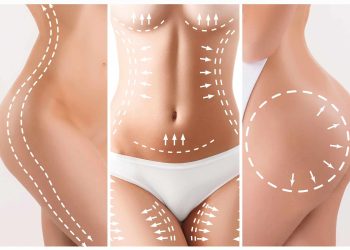Have you ever wondered why skin therapists initially conduct a detailed skin analysis before performing actual treatment procedures? This is the most important step in skin therapy as skin analysis reveals a lot of things such as skin type, texture, various skin diseases that one is vulnerable to etc. Quality skincare in Australia makes sure that the patient receives the right consultation before the actual treatment. A quick glance at the Australian skincare industry would reveal that the market is witnessing a steady progression, growing at a CAGR of 6.13% between the observation period (2020-2024). The rise in the composition of the elderly population in Australia over the past four decades would mean that the demand for anti-ageing skincare products and professional skincare is also steadily on the rise. The remarkable growth of the Australian skincare industry would also make room for novel findings in professional skincare. Read further to figure out the relevance of skin analysis in skin therapy.
WHAT IS SKIN ANALYSIS?
During this process, professional skin therapists detect the client’s skin texture and determine which products suit best for their skin. Since the analysis is based on the client’s lifestyle and skin routine, therapists will be able to accurately recommend the best treatment for them as well. Some of the industry experts like Dermalogica allow the clients to do virtual skin analysis by making use of advanced face-mapping technology.
WHAT ARE THE FACTORS THAT AFFECT THE FORM OF ONE’S SKIN?
Skincare in Australia carries out skin analysis by studying multiple factors that affect the quality of one’s skin. These factors include climatic variations, temperature variations, pollution level, exposure to UV light, smoking habit, sleep cycle, daily stress, regular diet, medical conditions of the client, allergies, hours spent in the open air and skincare routine.
WHAT IS THE REAL OBJECTIVE OF SKIN ANALYSIS?
Like how doctors carry out several tests and cross-check the patients’ medical history before giving a new medicine, estheticians need to be thorough about the specificities of a client’s skin to prescribe proper treatment. Skin analysis facilitates this and hence allows the therapists to gather important information and provide customised products later on.
WHY SHOULD THE SKIN THERAPIST BE AWARE OF THE CLIENT’S SKIN TYPE?
It is difficult to divide skin types into neat categories but features like skin texture, clogged pores and rashes aid in suggesting treatment options.
Skin Type
Both genetic and environmental factors affect the condition of the skin. The 4 common types of skin are oily, dry, normal and combination skin.
OILY- The excessive production of sebum causes oily skin and it paves the way for blemishes such as acne. It makes the skin texture greasy and shiny. Though genetics is an influencing factor, hormonal fluctuations, eating habits and stress also are determining factors. Proper skin care will reduce irritation. Water-based moisturisers are often considered ideal for those having oily skin.
DRY- Environmental pollution and other external factors are the major causes. People with dry skin want natural moisture. Vulnerable to rashes and redness from UV light, dry skin appears dull and is non-resilient. Therapists focus on reinstating moisture during treatments.
NORMAL– As one would expect, normal skin is well balanced in terms of oil production and moisture.
COMBINATION SKIN- it is a combination of dry and oily skin. Treatments usually focus on the reduction of pore size.
Latest website onlinecasinospark and trendwait more Information expressdigest














